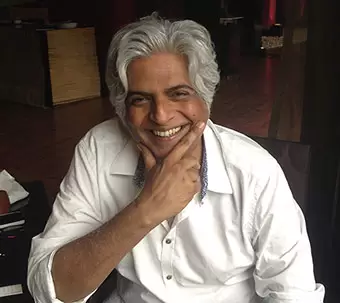
Style and Charisma personified, suave and enterprising to the core, Pankaj Keswani is the founder Managing Director of the 300 Crore worth Indian Façade conglomerate – Alufit which is either admired or envied by the contemporaries and the competitors alike. One of the founder members of Indian Façade and Fenestration Association, Pankaj charges up the atmosphere while delivering his thoughts and ideas to the other committee members. It was after one of these high voltage meetings, when I asked him where did you get this demeanour and an impeccably eye to spot just the right opportunity at the right time.
Post your Requirement
Sitting in his corner office, overlooking the city in one of the swankiest office spaces in Bangalore, Pankaj unfurled the bag of memories, emotions and reflections of some really tough choices that he made during his journey to the top.
WFM: Master of an unconventionally pleasing personality, you seem to belong more to the world of conventional corporates. How did you get into this foray?
PK: Honestly I hadn’t planned it the way it happened. I was on my way, taking just the right steps towards my dream of becoming a corporate honcho at a big business conglomerate when one fine day my brother Naveen, who had a business of aluminium window fabrication offered to join him. I had completed my MBA and was a management trainee at Usha, sure to make it big in due course. When your brother tells you that the two of you can do wonders together in this yet to be explored, but market of tremendous potential, you get convinced. So did I. I thought yes, it’s a great idea and kicked my job and joined him at a princely sum of Rs. 2500 a month. Thus, all my dreams of making big in corporate world were kicked out of the window, literally.
WFM: But you have made it big…
PK: Yes, for my own company and jokes apart, this certainly is more satisfying.
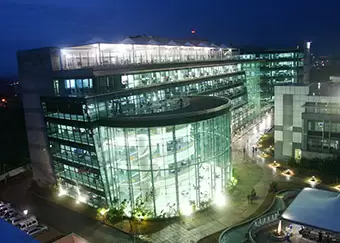
WFM: Then how did this transition from Aluplex to Alufit happen?
PK: After working for 6-7 months with my brother I realised, there can’t be two lions in the same jungle. I felt I could never be the shining star at the business that my brother had started. Both of us have similar dominating personalities. So, after an amiable round of discussion we parted ways. Like they say if you are in an unsuccessful marriage, get divorced before the kids come along else it becomes a messy affair.
Not wanting to be on the same turf and poach my brother’s customers, I decided to test different waters and surveyed all the major metros before coming and settling in Bangalore.
WFM: Why Bangalore?
PK: It was in all fairness that I moved out from Mumbai. After touring almost all the major metros and sub metros, my last stop was Bangalore. This city had a cosmopolitan vibe to it even in those days. Architects were forthcoming and progressive and liked to think out of the box and build impressive structures. The city had a nice ring to it.
WFM: so how did you get your first break?
PK: I was 24 and staying in a lodge on double road paying 20 bucks a day making rounds of the architects’ offices in hope of finding my first break. It was on the last day of my stay there and after a close shave with what could be a fatal accident that I found this person who would give me my first contract. While crossing the road I spotted the board “Sanath Kumar & Associates” and mindlessly ran towards it overlooking the traffic. A few stumbles and admonishing from a rickshaw driver later, I entered the office of Mr. Sanath Kumar, showed him some samples and asked him “I want to start an office here, would you give me work?” He told me that I got a little too late and he had just finalized an order for a guest house in Indira Nagar with a window fabricator from Mumbai (not Aluplex)
I was really hungry for the job so I pleaded saying I won’t disappoint given a chance. Mr. Sanath Kumar was kind enough and introduced me to the client who used to stay in Goa, over telephone. I cancelled my return ticket to Mumbai and boarded a bus to Goa instead to pitch in for what would be my first job. The client had something particular in his mind and asked me if I could replicate the windows that were there in his guest house in Mumbai. Taking the cue I reached back to Mumbai and visited the site in question at Ushakiran Road. The windows were pretty much normal but with an added stainless steel cladding onto them. In two weeks’ time I had to be in Bangalore and start the work. So I came home and told my family that I am moving to Bangalore. That’s how it all started.
WFM: What did you propose to them? You had a system or were going to trade?
PK: Well, that’s interesting. From my small stint with my brother I had little knowledge of the business. When I came here I had no idea, not even an actual order. I didn’t know much about costing as well. But, then I took the measurements, did the calculation and offered the client a quote of 40,000 Rupees. After negotiating they finalised at Rs. 35,000. The client asked me the name of my company and in whose name the cheque should be made. I had no name and no company till that time. So I asked them to make a cheque in the name of ‘Aluplex India Pvt Ltd’. With this cheque in my pocket and smile on my face I came home and went straight to my brother saying – “Bro, wish me luck. I have started my own business and here is my first order”
I outsourced (in today’s jargon) the job to my brother and he was sweet enough to accept. He could have simply asked me to take a walk. I finished the job with his help and with much difficultly found an installer who actually installed the windows at site.
Enquire Now for Windows
The client was so happy that he gave me another job for Dattaram Salgaonkar’s own house.
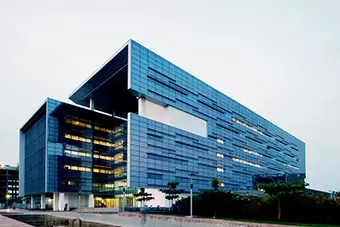
WFM: Did you make any money on your first project?
PK: Yes, around 3-4 thousand Rupees, that makes it roughly 10%. Not bad from today’s perspective. We sometimes make even less now. That’s how bad the market is in current times.
WFM: Then you actually built the factory or there were some more jobs ‘outsourced’ to Aluplex before Alufit came along?
PK: No, immediately after that I moved to Bangalore for good. When I was leaving Bombay, I hugged my brother, thanked him for all his support. My brother was very gregarious. Although he was struggling in those days and just 2-3 years in business, he gave me 5000 Rs. to start up. My father gave me another 1000. That was all I had and now I had to raise capital. Amongst friends and a very generous uncle, I was able to raise my capital to around 50,000, armed with which I came to Bangalore.
I got married to my girlfriend then who chose to be with me during my days of struggle rather than waiting for good times to come.
With my initial capital I leased a house and a shed for factory and was left with only 10,000. Now I had both but no furniture to keep in house or machines for factory. I at least needed a cutting machine which I bought for Rs. 7,500 from a company in Pune.
WFM: How has the journey been from that first guest house to all the swanky buildings you do now-a-days?
PK: After this first project I manufactured windows for bunk houses consistently for about a year – 6 to 7 bunk houses every month. This brought in a steady flow of funds and I could keep up the show I had started. This you can say was my real break, given to me by Captain Gopalan, as it put me on my feet.
Then, I kept on doing small jobs here and another there. I met nice people who supported me and slowly and steadily in my first financial year I clocked in Rs. 4, 85,000.
WFM: How did Alufit transitioned from windows to façade?
PK: Between 1984 and 2000, market was mainly residential with a few sizable commercial ones. The only difference with respect to their fenestration was that residential had smaller windows and commercial had larger. So the same section, same series were used everywhere in all sorts of projects.
Then came the IT revolution in year 2000 and brought along the major changes in the façade world as well. The national and international IT companies began setting up their offices here and demanded the buildings to be designed in similar fashion as they are done abroad.
Thus the fancy façades were being conceptualized and there was a need to execute them. We just happened to be at the right place at the right time and sailed the boat in the right direction. All I did was to make sure that we delivered what we took up. We took our job very seriously then and we do the same even today.
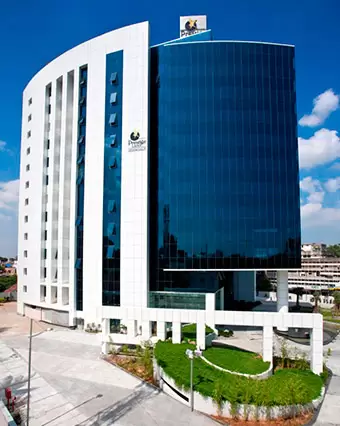
WFM: Which was your first structural glazing job?
PK: The very 1st project for which we did structural glazing is at Cunningham road called the Geneva House for HM constructions. Thomas Associates were the architects for the project.
Then we did the software blocks and restaurant at the Infosys Electronic city campus. Then we did for Wipro andfurther a few projects for Prestige as well. Rest is history.
WFM: What were the systems available at that time? Did you import/design special systems for structural glazing projects?
PK: originally we were never into structural glazing and knew nothing about it. One fine day I had gone to meet Mr. Thomas and he showed me the drawings of Geneva House. I told him that this is structural glazing I don’t know how to do it neither do I have sections to build it. He chided me saying that people from China and other places are ready to come and do it here and I being a native am shying away. I thought I will give it a shot and Mr. Thomas gave me some drawings to mull over and come up with a solution.
I pored over the drawings and got the team of a leading structural sealant company involved. With their help we got some systems designed. I took the newly formed system design to Bhoruka Extrusions and asked them to extrude them for me. In two weeks’ time I got the mock up erected with the help of the sealant company team and called the client and the architect to flaunt my work of art. They said – “Wow! This is fantastic. This is what we want and this is how it’s done”
This became my initiation into structural glazing. That became our series for Structural Glazing which was very sturdy and never leaked and is still available in the market in the name of ‘Alufit Ambassador Series’.
WFM: What was your thought behind taking a plunge into the business of extruding from fabricating?
PK: Until 2000 we were a small organization with less money and little problems. By 2000 we had reached a turnover of 6 crores and kept on growing exponentially in the coming years. By 2005-2006 our turn over had crossed the 100 Crore mark. We had surpassed all the big façade companies from Mumbai. While we were growing so fast we started facing the crunch in terms of extrusion supplies. No extrusion company was able to keep up with our requirement.
This led to eureka moment (at least I thought it was one) and I thought – why don’t I do backwardintegration and all my troubles would vanish. I decided to set up an extrusion line with a vision that it will feed my fabrication unit as well the market and everyone would be released of this bottle neck. With this noble idea it seemed just the right thing to do.
In 2007, I went about looking for the equipment. We bought extrusion press from Japan, handling equipment from Italy, anodizing line again from an Italian company, powder coating from a Swiss company and so on. So we managed to buildthe finest plant on a beautiful piece of land in Kuppam, designed by architect CRNarayan Rao. In 2009, February 10th we got it commissioned, within 2 years from the conception of the idea.
WFM: But then what went wrong? How did this noble idea fell apart and why did you have to come out of it?
PK: My father used to say – “it’s not your fault doing the right business at the wrong time. But what would be your fault is to not take the right decision at the right time”. As planned, we started early in 2009 but as it happened, the timing was wrong. September 2008, The Lemon Brothers had collapsed, with that the entire world economy and we are still seeing the ripple effects. We had everything right. Good orders at good prices, but then the bottom fell out and all the businesses got affected. The demand shrunk. There was suddenly an oversupply of the glazed panels. At one time the developers used to build in anticipation, now they would build only on actual demand.
The rates nosedived. All of a sudden I found myself into monumental debt trap. I had placed all my life’s savings along with a substantial loan into that extrusion plant, banking on my fabrication business which suffered badly due to this market crunch.I was so close to becoming an NPA – Non Performing Asset when bank gets the liberty to take over everything. Everybody would come and lend a shoulder to cry – poor Pankaj, what a plant but what tough luck.
Then it just occurred to me that we need to sell off. We appointed an advisor to help find us a suitor. Along came SAPA. The had come to buy some extrusions but they liked the plant so much that it took me a mere mentioning that it’s up for stake and they decided to buy a majority stake in my plant. They came, saw and after various rounds of discussions and negotiations they decided to buy it out completely. I had to take a call. It was either 100% or nothing. It was a catch 22 situation. Either I take the bullet on my head or my chest.
But in the end it was not that bad. I was relieved of all the debts and troubles. I got it sold on my terms at my price. And I was left with my fabrication business, my people, my team and my occupation.
WFM: Do you ever regret? You almost lived your dream, but you had to part ways with it…
PK: No regrets. But yes I wanted to build it to be India’s biggest and best plant. It didn’t happen that way but whichever turn it took, I believe it was for the best.
I erred, I erred to an extent that if wanted to get into extrusion, I should have come out of fabrication. It’s very taxing and needs your 100 percent.
And so is the extrusion business. Having a fabrication business also deterred my competition and contemporaries to buy extrusions from me, seeing it as a potential threat to their business. I had the best plant but no takers. “water water everywhere, but not a single drop to drink”
But God came to our rescue and I haven’t stopped smiling since then.
WFM: Alufit has managed to glide a notch above all the others in business. How do you distinguish yourself? What does keep you afloat?
PK: It’s all about building a team, I am only the general a general is as good as his army. I am more than confident that my team would beat any other team hands down in terms of prowess. The energy and the commitment they put in makes them stand apart.
Secondly, we have a very decent management system. We conduct weekly meetings where every stage and every project is deeply analysed, problems are identified and solutions are sought. I tell my team – never do a bad job; if the client is seeing you putting the right effort then he is not going to hang you due to a minor delay which are not so uncommon in our industry.
One needs to choose the customers and the job considering all the factors. And then trust them. They share their costs. I trust them that they will pay me. With this trust I finish each project and everything falls in place.
WFM: DO you think you were lucky being in Bangalore where there are mainly corporate clients who are known to be good paymasters?
PK: I rode the wave, I knew how to surf and have been surfing well. But it’s like swimming with the sharks. Although we are in Bangalore, we are not doing all Infosys projects, we aren’t working with Wipro. We do have projects in the IT city but that’s mainly with the developers.
We are doing some projects with TCS but that’s not in Bangalore. We started with Chennaiand then did their Pune and Hyderabad projects.
But trust me no one is going to give you a job because they like your face. You have to keep delivering. And no one pays you more than they would to other. It’s how you manage in that, consistently deliver the right quality. You are as good as your last job. You have to repeat your performances.
WFM: What is your biggest fear – what’s your plan B?
PK: Honestly haven’t thought about it. None of us expected to hit recession in 2008. But we were hit and we came out. So we ought to take it as it comes.
WFM: Do you still work with all your Ambassador and Mercedes series or do you use systems as well?
PK: Well no. For each jobwe need to design a system suitable for that city, that zone. We have a very strong design team. We haven’t had the need so far. And never did our clients pressurize that we need to have a Schueco or a Kawneer.
WFM: Last parting message to your industry friends…
PK: Thereis no substitute for hard work, especially in this industry. If anyone thinks there is a shorter route to the top, believe me they are making the biggest mistake of their life. You have to bruise your knees and get into the grind. In this industry it takes years to build a reputation and one bad job can bring you spirally down. It’s like snakes and ladders. You have to be alert, you have to be alive.

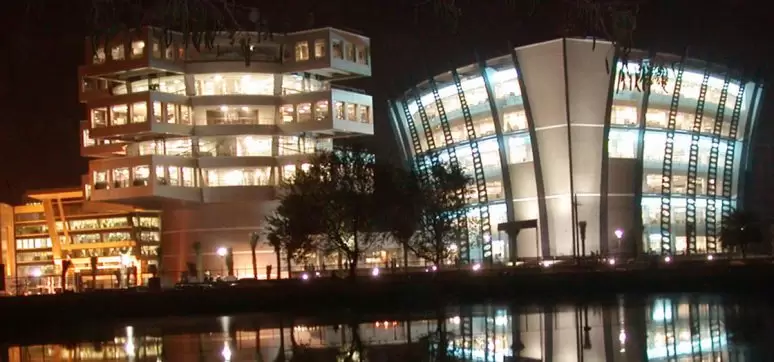
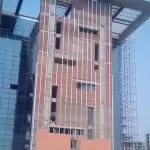
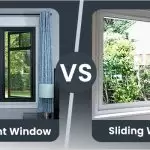

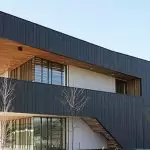

















Post A Comment